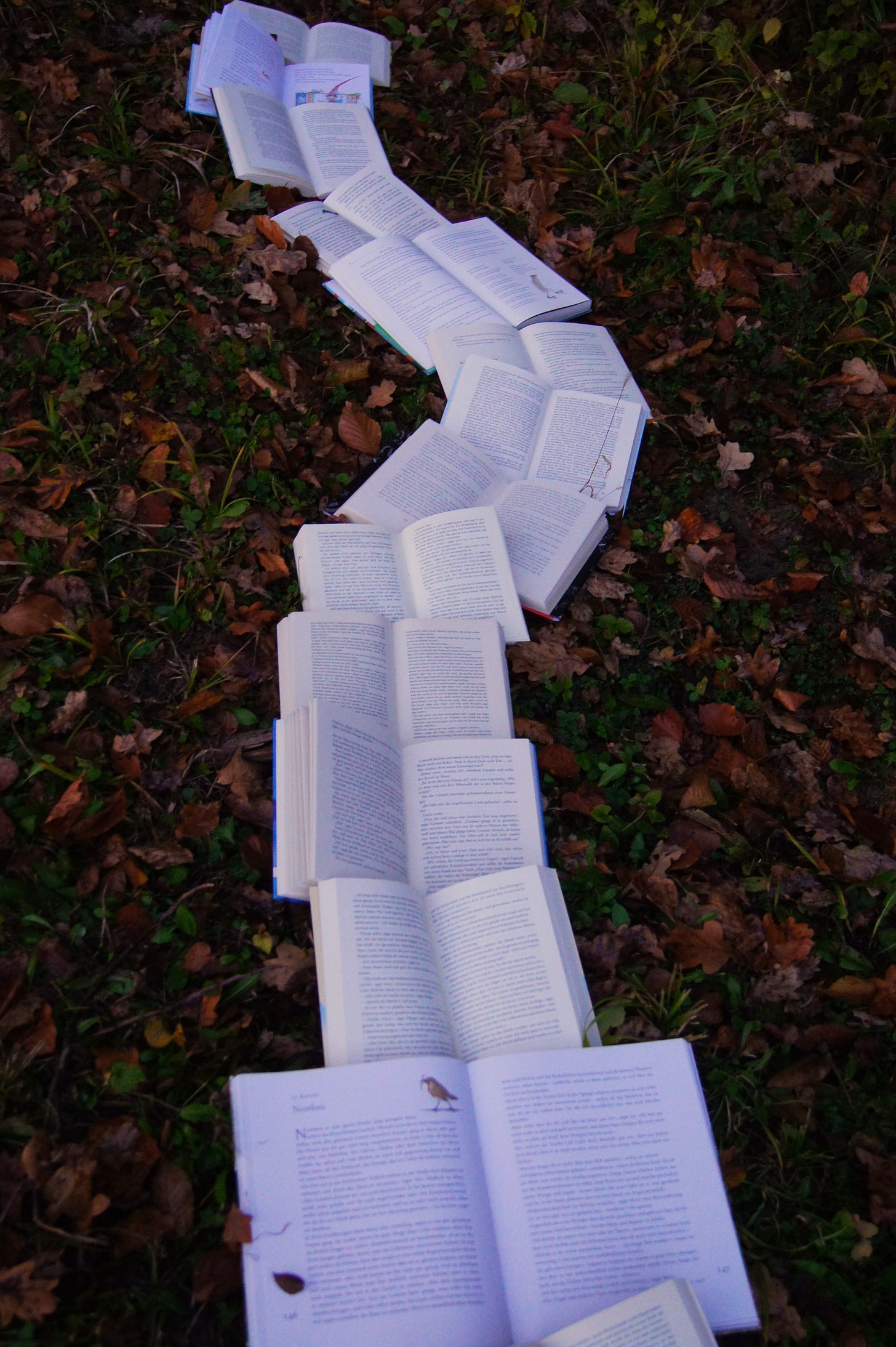Welcome to Thursday Things! If you enjoy this edition, please click the heart icon in the header or at the end of the post to let me know.
A walk is good for your health. A walk in the middle of the highway? Not so much. Photo by Tegan Mierle on Unsplash
Free advice!
Keep moving to keep living. Can it be that simple? Maybe so.
Going for a 10-minute power walk every day could be secret to long life
Could a 10-minute power walk every day could add years to your life? A recent study of nearly 5,000 older adults found that deaths fell as physical activity increased. Just 10, 20, or 30 minutes extra exercise a day per day reduced annual mortality rates by seven, 13 and 17 percent respectively.
The study shows that adding 10 minutes of physical activity each day resulted in an estimated 111,174 preventable deaths per year. Not surprisingly, the more physical activity, the more deaths prevented. The number almost doubled and tripled to 209,459 and 367,037, respectively, for 20 and 30 minutes. Similar results were observed for men and women, including those of all ethnic backgrounds.
Take a walk, you’ll live longer. And even if you don’t you’ll feel better. Other studies show that walking relieves stress, elevates your mood and helps overcome mental blocks, reduces dementia risk, and much more. So my advice — take a walk.
The paper is published in JAMA Internal Medicine.
Free maps!
It has been a while since Thursday Things has featured a free online archive of cool stuff. So here is a collection of one of our favorite things — maps!
The David Rumsey Map Collection, first founded in 1985, was donated to the Internet Archive for preservation purposes in 2022.
Here’s a more detail about the collection:
The David Rumsey Map Collection was founded in 1985 and went online in 1999 at davidrumsey.com. The collection includes over 200,000 rare 16th through 21st century maps of the entire World and parts of the Universe. 115,000 maps and related items are available online and 60,000 of those have been georeferenced. Rumsey has been donating the physical map collection and the digital database made from it to the David Rumsey Map Center at Stanford Libraries since 2008. The map center opened in 2016. The online map collection is a searchable database that allows you to make your own journeys into spatial representations of the past. Here you can see the history of cartography through primary sources from the present to centuries past. In 2022 Rumsey gave the entire digital collection to the Internet Archive to preserve and make available in the Archive's online library.
And here are a few breadcrumbs to get you started:
Ever wanted to explore Egypt circa 1935 or see what the English county of Lancashire looked like in the early 17th century? This collection is home to thousands of maps from around the world and throughout history–check out this early map of the world, these Edo-period maps of Buddhist shrines, or this Depression-era map of Hilo, Hawaii.
Or how about a horse map of the world? I didn’t know I needed one, but now I do.
Horse map! Source: David Rumsey Map Collection, David Rumsey Map Center, Stanford Libraries.
Free book!
If you’re a copyright law nerd, or just someone who wants to better understand copyright in a digital world, then you’re in luck.
Law Professor Makes Digital Copyright Book Open for All
After spending years researching the history of U.S. copyright law, Jessica Litman says she wants to make it easy for others to find her work.
The law professor’s book, Digital Copyright, first published in 2001 by Prometheus Books, is available free online (read now). After it went out of print in 2015, University of Michigan Press agreed to publish an open access edition of the book. Litman updated all the footnotes (some of which were broken links to web pages only available through preservation on Internet Archive) and made the updated book available under a CC-BY-ND license in 2017.
“I wanted the book to continue to be useful,” Litman said. “Free copies on the web make it easy to read.”
Geared for a general audience, the book chronicles how copyright laws were drafted, written, lobbied and enacted in Congress over time.
I’ll definitely give it a read. For more on the history and public purpose of copyright I also recommend a book by my copyright professor in law school, the late L. Ray Patterson, The Nature of Copyright: A Law of Users’ Rights.
A perfectly baited trap. Photo by Laura Kapfer on Unsplash
Life in the cold lane
If you’re interested in living longer, then grab a sweater. Or maybe that should be take off your sweater and shiver a little?
According to research from the University of Cologne, exposure to lower temperatures may contribute to a longer lifespan by helping cells remove damaged proteins which contribute to the aging process.
Cold Temperatures Seem to Have a Mysterious Effect on Longevity
Several neurodegenerative diseases that can take hold as we get older – including Alzheimer's and Parkinson's – are linked to the build-up of bad proteins, so discovering how temperature affects this process is a significant step forward in terms of finding ways to potentially slow or even stop this deterioration from happening.
While sitting around in the cold is unlikely to be a therapy option any time soon, understanding the workings of processes that cold temperatures kick start could help us to replicate them through the use of targeted treatments.
"Extreme low temperatures are detrimental, but a moderate decrease in body temperature can have beneficial effects for the organism," write the researchers in their published paper.
Okay, sounds good. But how?
The researchers ran tests on the Caenorhabditis elegans worm and on cultivated human cells in the lab, finding that colder temperatures led to the removal of protein clumps that accumulate in animal and cell models of amyotrophic lateral sclerosis (ALS) and Huntington's disease.
This was done through structures called proteasomes that break down protein waste, and in particular the worm version of the PA28γ/PSME3 proteasome activator found in humans. It only took a moderate drop in temperature in order to get the activator working and cleaning up potentially dangerous protein accumulation.
Further study is needed to work out the exact mechanisms and perhaps determine how this finding could be translated into useful therapies to prevent neurodegenerative diseases.
In the meantime, taking that walk we talked about earlier on a chilly day is probably double good for you. Keep that in mind next winter.
There was also this interesting nugget of knowledge in the article:
There's still lots to discover about the relationship between colder temperatures and aging. The average internal human body temperature has been steadily declining over the decades, for example, which may have influenced increases in life expectancy.
My own regular temperature is usually below 98.6 F, so I’m glad to know that is perhaps helping me live longer.
Get all the details of this research in Nature Aging: Cold temperature extends longevity and prevents disease-related protein aggregation through PA28γ-induced proteasomes
“I shall live forever then!” Photo by Katie Gerrard on Unsplash
Thank you for reading!
Please click the hearts, leave a comment, and use the share feature to send this issue to a friend who might enjoy it. See you next Thursday!






